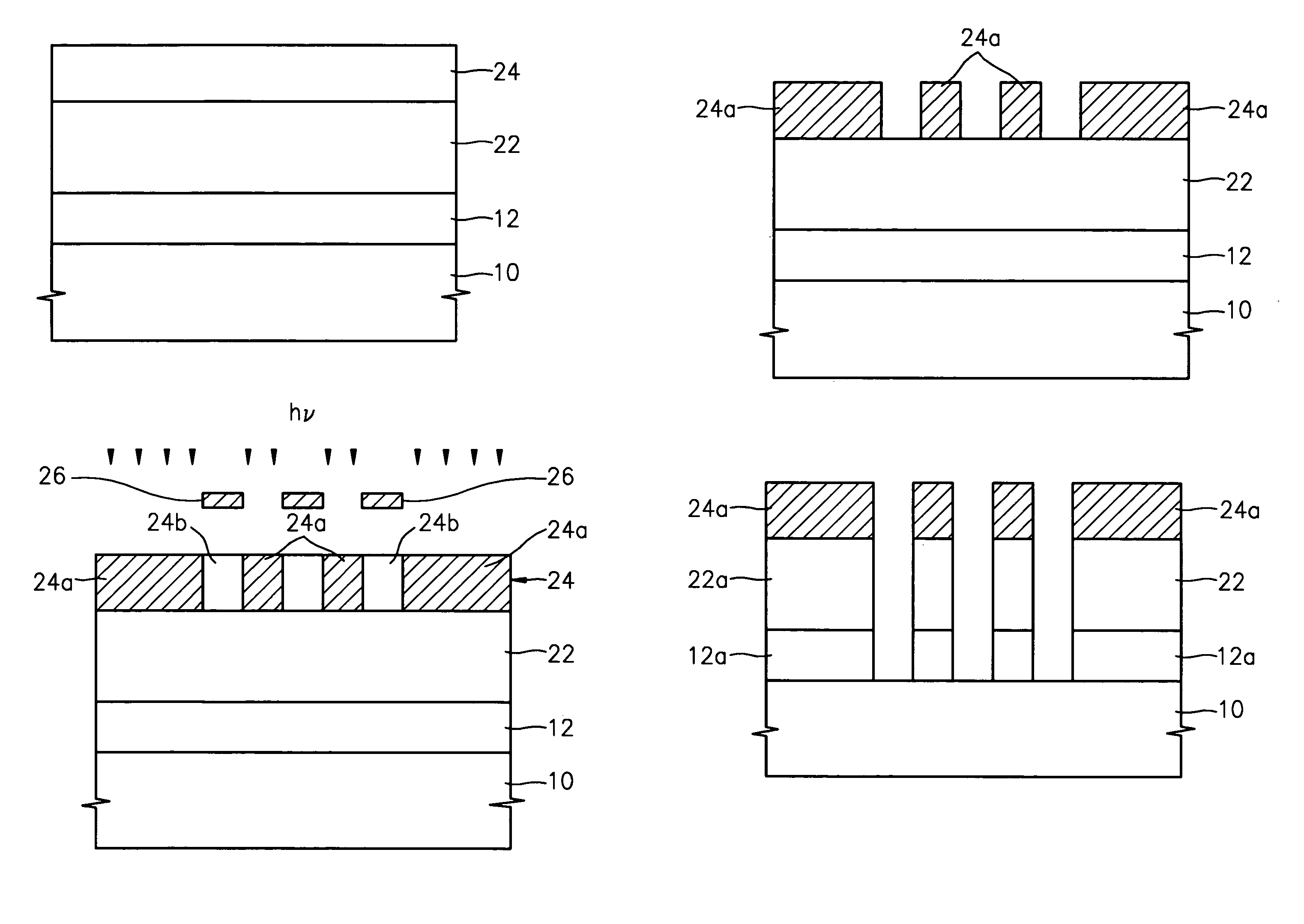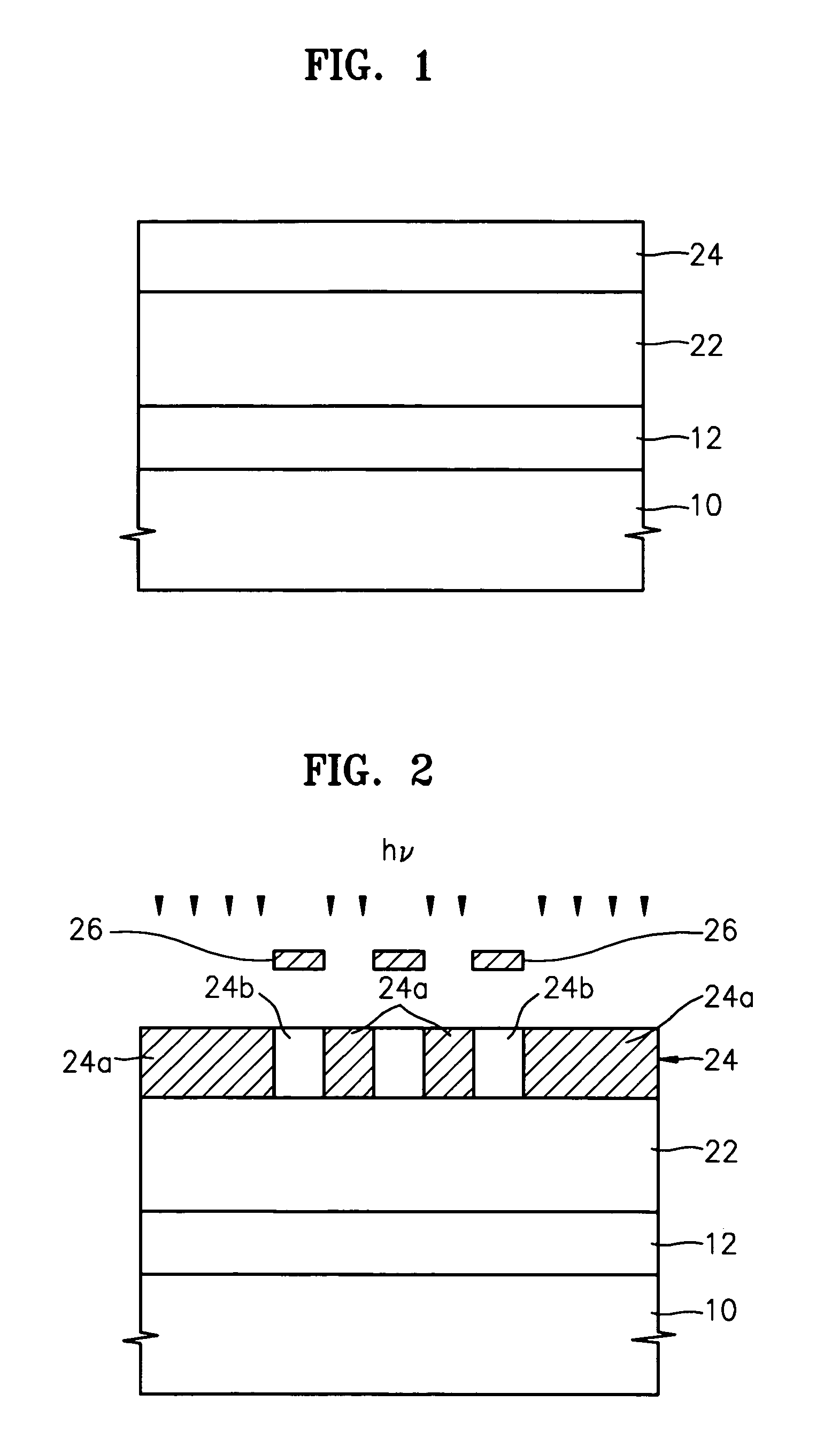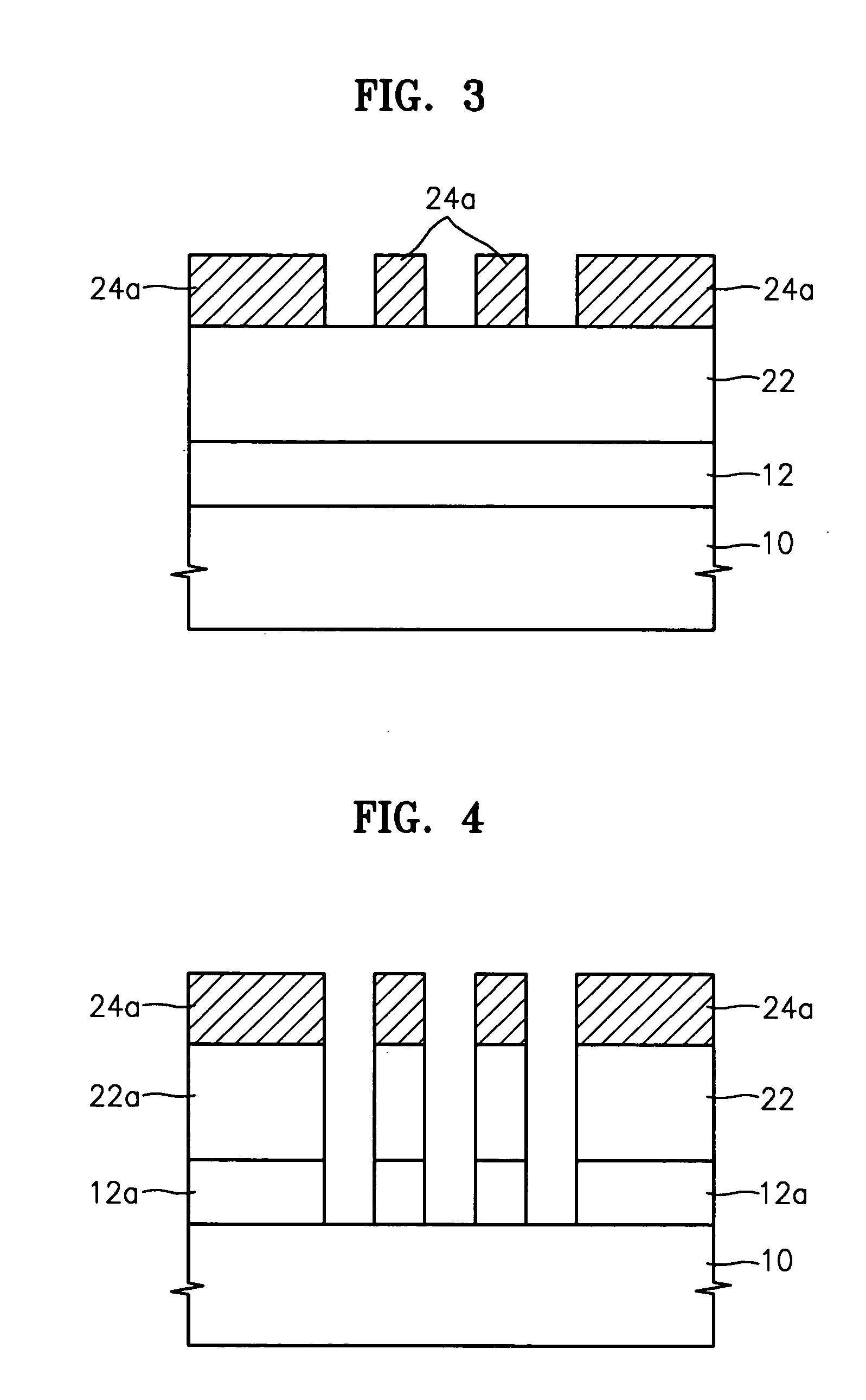Silicon-containing polymer, negative type resist composition comprising the same, and patterning method for semiconductor device using the same
- Summary
- Abstract
- Description
- Claims
- Application Information
AI Technical Summary
Benefits of technology
Problems solved by technology
Method used
Image
Examples
example 1
Synthesis of Polymer
[0056]
[0057]4.3 g of 3-[tris(trimethylsilyloxy)silyl]propyl methacrylate (10 mmol) and 3.9 g of 2-hydroxyethyl methacrylate (30 mmol) were dissolved in a round bottom flask containing 35 g of tetrahydrofuran (THF) and 0.33 g of azobisisobutyronitrile (AIBN) (5 mol %) and purged using nitrogen, followed by polymerizing at about 65° C. for about 12 hours.
[0058]After polymerization, the reactant was slowly precipitated with excess n-hexane. Thereafter, the precipitate was filtered, and the filtrate was dissolved in an appropriate amount of THF and re-precipitated in n-hexane. Then, the obtained precipitate was dried in a vacuum oven at about 50° C. for about 24 hours, giving a desired product at a yield of about 75%.
[0059]The obtained product had a weight average molecular weight (Mw) of about 13,200 and polydispersity (Mw / Mn) of about 1.9.
example 2
Synthesis of Polymer
[0060]
[0061]1.8 g of 4-hydroxystyrene (15 mmol), 2.0 g of 2-hydroxyethyl methacrylate (15 mmol), and 4.3 g of 3-[tris(trimethylsilyloxy)silyl]propyl methacrylate (10 mmol) were dissolved 30 g of THF and 0.33 g of AIBN (5 mol %), followed by polymerizing, thereby synthesizing a desired polymer at a yield of about 70%.
[0062]The obtained product had a weight average molecular weight (Mw) of about 12,100 and polydispersity (Mw / Mn) of about 2.0.
example 3
Synthesis of Polymer
[0063]
[0064]2.6 g of 2-hydroxyethyl methacrylate (20 mmol), 2.95 g of maleic anhydride (30 mmol) and 4.3 g of 3-[tris(trimethylsilyloxy)silyl]propyl methacrylate (10 mmol) were dissolved in 20 g of THF and 0.20 g of AIBN (2 mol %), followed by polymerizing, thereby synthesizing a desired polymer at a yield of about 50%.
[0065]The obtained product had a weight average molecular weight (Mw) of about 9,700 and polydispersity (Mw / Mn) of about 1.9.
PUM
| Property | Measurement | Unit |
|---|---|---|
| Percent by mass | aaaaa | aaaaa |
| Weight | aaaaa | aaaaa |
| Molecular weight | aaaaa | aaaaa |
Abstract
Description
Claims
Application Information
 Login to view more
Login to view more - R&D Engineer
- R&D Manager
- IP Professional
- Industry Leading Data Capabilities
- Powerful AI technology
- Patent DNA Extraction
Browse by: Latest US Patents, China's latest patents, Technical Efficacy Thesaurus, Application Domain, Technology Topic.
© 2024 PatSnap. All rights reserved.Legal|Privacy policy|Modern Slavery Act Transparency Statement|Sitemap



